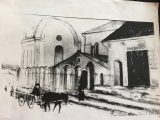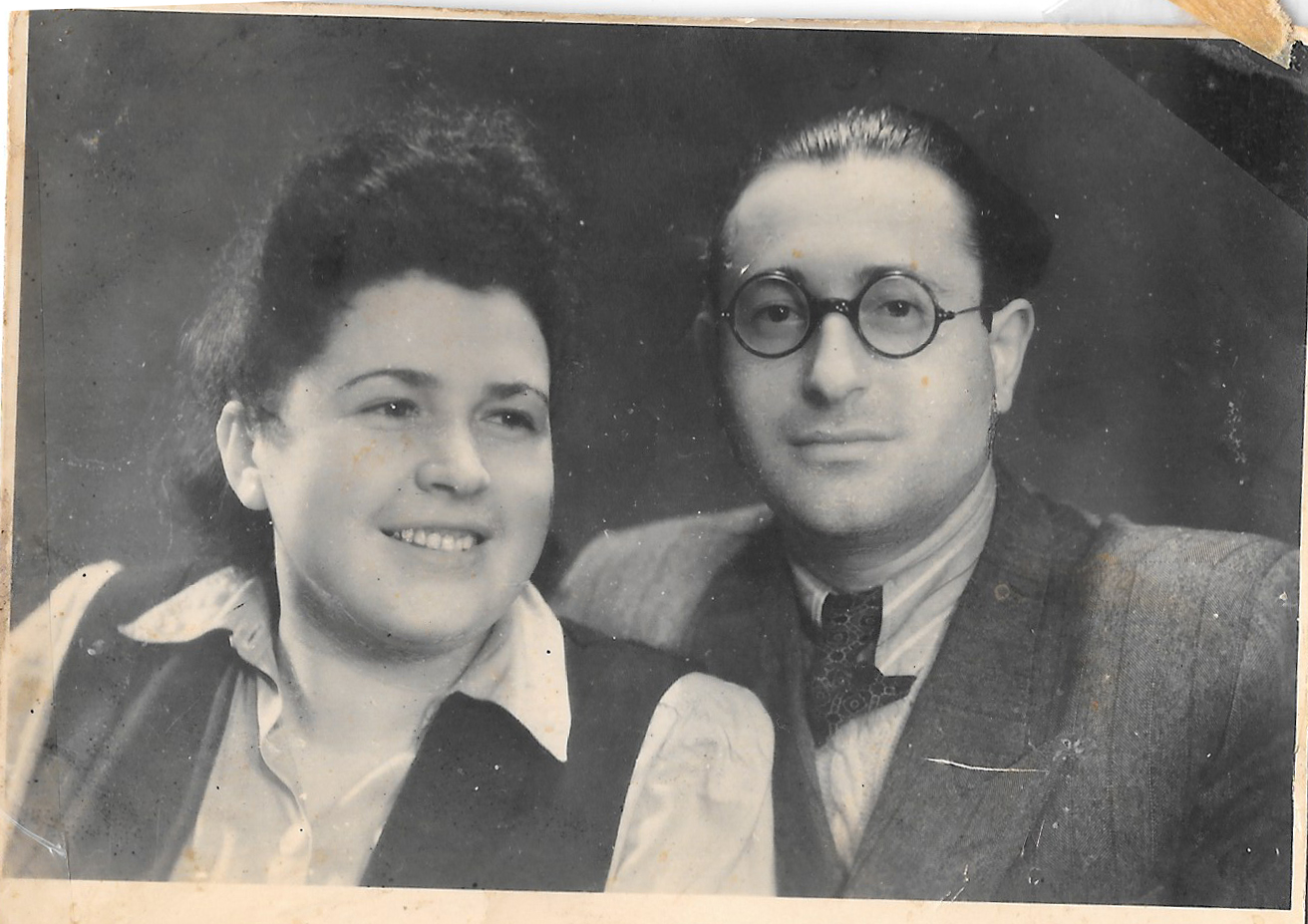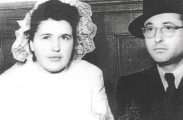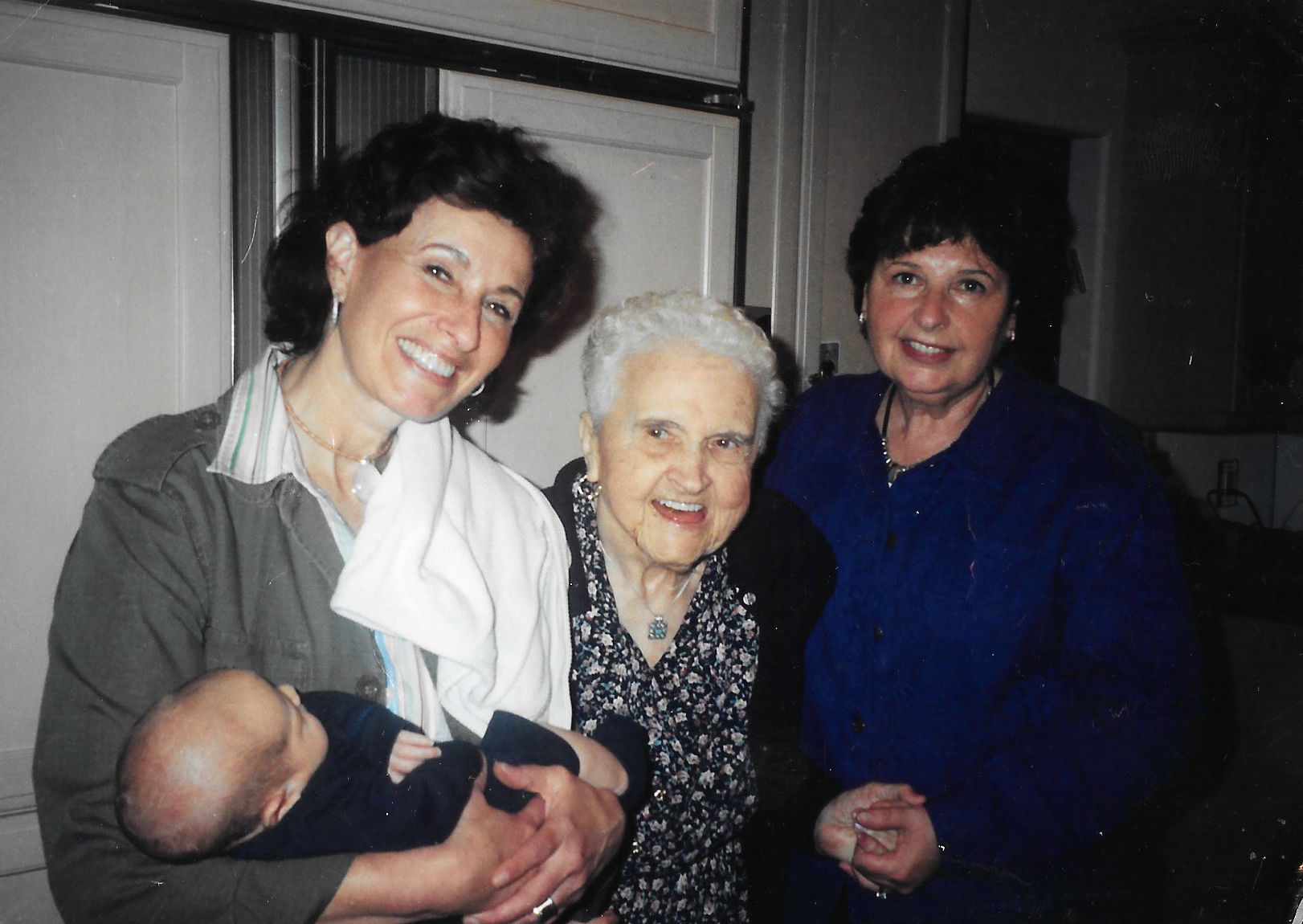- Local Survivor registry
- MALA BORENSTEIN
- Local Survivor registry
- MALA BORENSTEIN
Survivor Profile
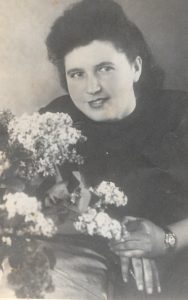
MALA
BORENSTEIN
(1921-2007)
PRE-WAR NAME:
MALAKA EISENBERG
MALAKA EISENBERG
PLACE OF BIRTH:
ZMIGROD, POLAND
ZMIGROD, POLAND
DATE OF BIRTH:
MAY 6, 1921
MAY 6, 1921
LOCATION(s) BEFORE THE WAR:
ZMIGROD, POLAND
ZMIGROD, POLAND
LOCATION(s) DURING THE WAR:
ZMIGROD, POLAND; HIDING IN FOREST, DACHAU; BERGEN BELSEN
ZMIGROD, POLAND; HIDING IN FOREST, DACHAU; BERGEN BELSEN
STATUS:
SURVIVOR
SURVIVOR
RELATED PERSON(S):
MORRIS BORENSTEIN - Spouse (Deceased),
SUSAN BORENSTEIN HIRSCH - Daughter,
ELLEN (ESTHER) BORENSTEIN - Daughter,
CHAIM BORENSTEIN - Son,
ZELIG EISENBERG - Cousin,
ANDREW HIRSCH - Son-in-law
-
Brief BIOGRAPHY BY NANCY GORRELL
Malaka (Mala) Eisenberg was born on May 6, 1921, in Zmigrod, Poland, in a shtetl consisting of a synagogue, a cemetery and a mikvah. There were horses and buggies in Zmigrod and the streets were unpaved. Most people were poor. Mala’s mother’s family owned a grain store, and they had enough money to send their children to school. Her mother was the youngest of eight siblings.
Nobody in Mala’s immediate family survived the war. She was educated in the lower grades which was the practice for girls at that time. The family was Hasidic and very religious. Her mother and father died right before the war broke out. Mala was 18 at the time. During the invasion of the Nazis, Mala and her first cousin, Zelig Eisenberg went into hiding in the forest. After a year, they were captured and sent to forced labor in an ammunition factory. Mala spent the entire war in forced labor and concentration camps.
The fate of those left behind in Zmigrod during the Nazi invasion was certain death, as history records the massacre of the entire Jewish population of Zmigrod—1250 men, women and children—shot to death at Halbow in a mass grave on July 7, 1942. According her daughter, Susan Hirsch, Mala never talked about her Holocaust experiences, but she believes her mother experienced five or six concentration camps, Dachau and Bergen Belsen for sure.
Susan does not know the story of her mother’s liberation, but she does know that upon liberation, her mother was near death from typhoid fever and that she was hospitalized for one year. After recuperating, her mother was sent to a Displaced Persons camp in Germany where she met her future husband, Morris Borenstein. Mala had rich relatives living in the United States—Yakov Eisenberg, in particular, who sponsored Mala and Zelig’s emigration.
Mala and Morris settled in Brooklyn, New York where Morris worked in the shoe and leather goods business. Mala’s first child, Ellen, was born shortly thereafter, and Susan was born on July 31, 1952 followed by a son, Chaim, eight years later. Post-war life was a difficult adjustment for Mala. She was sick most of her life, suffering from depression and breakdowns. According to Susan, “she didn’t have a happy life. She suffered.” Mala passed in 2007, three years after Morris.
Editor’s Notes:
(Refer to Related Media for artistic representation of Zmigrod.
Refer to Historical Notes below for The Halbow Massacre and the Jews of Zmigrod.
-
SURVIVOR INTERVIEW:
MALA BORENSTEIN INTERVIEW WITH SUSAN HIRSCH, DAUGHTER
AND JUDITH POLLAK, COUSIN
Date: June 16, 2017
Location: Hirsch residence
Interviewer: Nancy Gorrell
Q: Describe Mala’s family background
Mala (Malaka) Eisenberg was born May 6, 1921, in Zmigrod, Poland. There were horses and buggies in Zmigrod, no cars. Most people were poor. My mother’s family owned a grain store, and they had enough money to send their children to school. My mother was the youngest of eight siblings. Nobody in her immediate family survived the war.Q: Did your mother have any schooling?
She was educated just in the lower grades. The girls and women stayed home and worked at home. She was expected to marry her first cousin, Zelig Eisenberg.Q: What was religious life like in Zmigrod?
My family was very religious. They were Hasidic. I think there was a synagogue in the town. The picture we have of the town indicates a synagogue (refer to the picture of Zmigrod).Q: What happened to the family when the Germans invaded Poland?
My mother’s mother and father died right before the war broke out. During the invasion at some point, I don’t know when, she fled and hid in the forest. She was hiding with her first cousin, Zelig. She was 18 at the time. There was talk that they were supposed to get married.Q: Do you know what happened to Zmigrod?
I believe the people were rounded up by the invading German army and shot to death. I don’t even think they dug mass graves. They were just murdered. About 1250 were murdered from the sheltl.Q: What happened to your mother and cousin Zelig?
They hid out in the forest for a year and then they were caught. They were both sent to an ammunition factory. My mother was in five or six camps. She never talked about it. So I don’t know exactly, but I do know Dachau and Bergen Belsen for sure. She spent the entire war in camps in Poland.Q: Where was she liberated from?
I don’t know the camp my mother was liberated from. Zelig was liberated from Buchenwald. We know that. Growing up, we knew nothing about her experiences. I learned later on about some of her experiences when I accompanied her to a psychiatrist and listened to her talking. She was caned early on in the ammunition factory.Q: What happened to your mother post-war?
She was hospitalized upon liberation for typhoid fever. She was barely alive, near death. She was in the hospital for one year recuperating. After that, she went to a Displaced Person’s camp in Germany. She met my father, Morris Borestein SP in the DP camp.Q: How did you come to emigrate from Germany to the United States?
We had wealthy relatives in living in Manhattan, the Eisenbergs. They owned a company called Amalgamated Wood Heel Co. making pocketbooks, wallets, and shoes—Yakov, Wolf and Jacob. Yakov sponsored Mala and Zelig to come to America. But once in New York, he didn’t want anything to do with them.Q: Where did your mother and father settle?
They settled in Brooklyn in east New York on Dumont Avenue. My sister, Ellen was born shortly thereafter. She was named Ellen (Esther) after my grandmother. I was born July 31, 1952. My brother, Chaim, was born eight later.Q: What did your father do for a living?
My father was a factory operator in pocketbooks and shoes. He was in the same business as the Eisenbergs but not in their factory.Q: How was the post-war adjustment for your mother in the United States?
My mother was sick all her life. She had bouts of depression and breakdowns. She didn’t have a happy life. She suffered. She passed in 2007. -
HISTORICAL NOTES:
THE HALBOW MASSACRE AND THE JEWS OF ZMIGROD
The Holocaust in the Shtetl of Zmigrod
On July 7, 1942 the Jews of Zmigród and surrounding villages were taken to the mountain Halbów, where they were shot dead by the Nazis. 1250 men, women and children were massacred. With them Zmigród died.
The Halbów Monument Stands on the mass grave of 1250 Jews who were murdered by the Nazi-barbarians on July 7, 1942
- Pinchas Walmut returned to Zmigród after the war and organized about 50 Zmigródians from Israel, Europe and the US; he created the permanent concrete base and gates and a monument in 1950 for the mass grave.
- In 1991, members of the New York Zmigród Society returned. This group included Max Findling and his son Michael Findling, Simon Findling, Leo Rosen and his daughter, Naftuli Lax and his two sons, and Zelig Eisenberg. They found that the stone monument was weathered and unreadable; back in the US they arranged for a replacement.
- In 1993 at a ceremony at Halbow, the group was present at the erection of the new monument. It was a sad but gratifying moment. Now those friends and family who were killed and buried at Halbow, would be remembered and honored.
-
Sources and Credits:
Credits:
SSBJCC Holocaust Memorial and Education Center Interview June 16, 2017 with Susan Hirsch, daughter and Judy Pollack, cousin; Interviewer: Nancy Gorrell; family photographs donated by Susan Hirsch; Biography by Nancy Gorrell


